|
The traditional general cargo shipping has been
pronounced dead since many years, but in various trading areas it is still
in much demand, however today the ships are called MPV (Multi Purpose Vessel),
MPC (Multi Purpose Container) or MPP (Multi Purpose & Project).
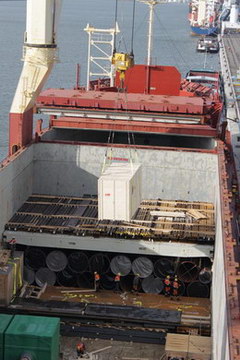
An important trading area for these vessels is West
Africa, because a large part of the available cargo cannot be transported by
pure container vessels, for example pipes for the oil industry.
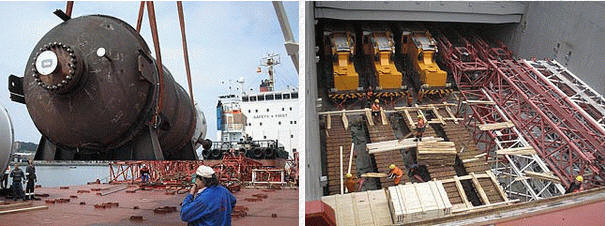
Further there are customers, who prefer to transport
their cargoes as break bulk, even if the cargoes could be carried in
containers.
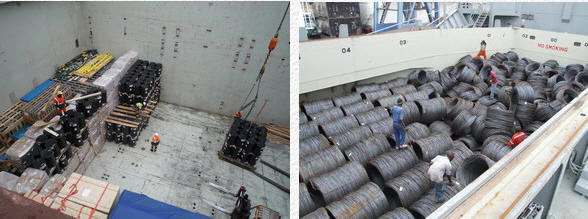
So-called project cargo is mainly used for the oil and
gas industry, but also for the mining and other industries. The trend is to
fabricate parts for technical plants, such as oil refineries, drilling rigs,
manufacturing plants etc. in as big modules as possible, thereby reducing
assembling time and simplify works on the building site. Therefore these
modules very often are larger and cannot fit into container's, also their
weight may be considerable.
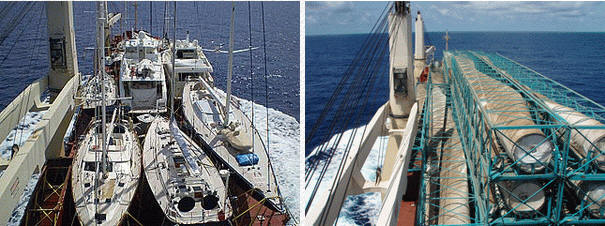
Further all kinds of vehicles, such as trucks,
construction machines and cars are loaded. Many used cars are shipped to
Africa, many of them stuffed with old refrigerators, cooking ranges and many
other used household items.
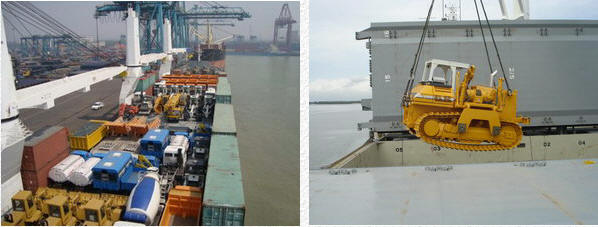
From Africa agricultural products, such as coffee, cacao
etc. are loaded, for this reason these ships are also fitted with an
efficient cargo hold ventilation system to prevent deterioration of the
cargoes.
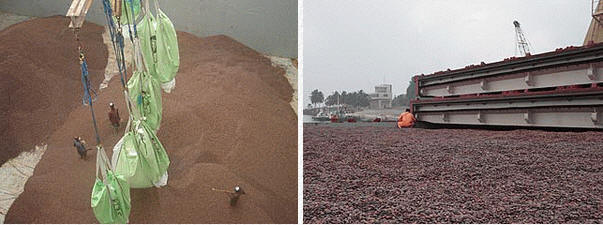
Timber is also carried, partly as trunks, but now more
often as sawed timber (as part of the industrialisation, the African
countries wish to process the timber in their own saw mills).
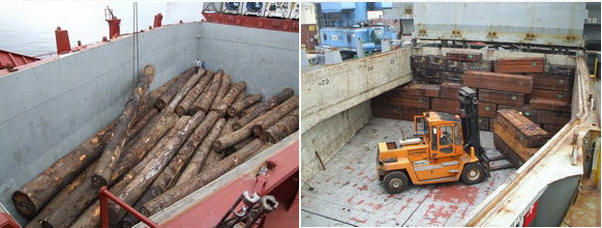
Eucalyptus wood from Pointe Noire

The cargo holds are rectangular or box shaped and the
dimensions are chosen to accommodate as many containers as possible. On the
sides ballast tanks are arranged. The hatches are extremely large and have
the same dimensions as the cargo holds, therefore the whole area of the
cargo holds can be reached by crane. The cargo hatch covers are usually of
the pontoon type, but also hydraulically operated hatch covers are used.
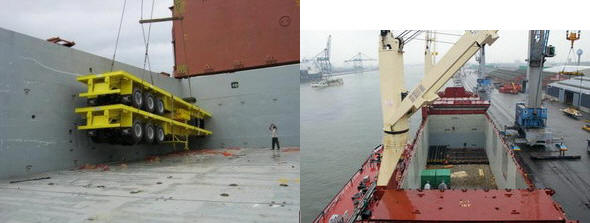
To carry general cargo tween decks are fitted, either
hydraulically operated or of the pontoon type. In order to carry bulk cargo,
such as grain, the pontoon tween deck covers can be used to erect
longitudinal bulkheads. The pontoon covers of the tween deck and of the
weather deck hatch covers are handled by the ship's cranes and are stowed on
the covers not used for cargo work. The tween deck and the weather deck
covers are of very strong construction and usually permit a load of about
3.5 mt/m2, therefore on these covers containers, vehicles and other cargo
can be stowed.
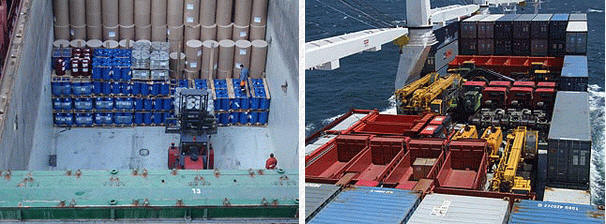
Even today, the ports in countries, such as West Africa
are still poorly equipped and therefore MP-vessels have to be equipped with
strong cranes for discharging and loading, but also to handle the heavy
pontoon hatch covers. On present vessels, in almost all cases the cranes are
located on the sides to obtain large unobstructed cargo hatches. The lifting
capacity of the cranes is about 80 mt and the cranes can be used also in
tandem mode, thereby doubling the lifting capacity.
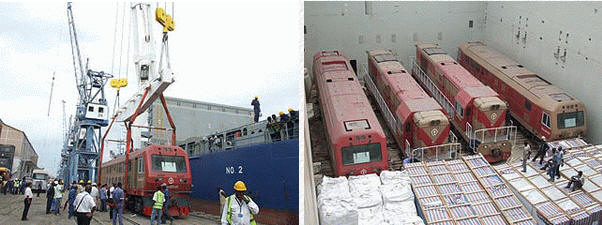
The ballast system is designed to quickly compensate any
list, when lifting heavy collies, using high-capacity anti-heeling pumps.
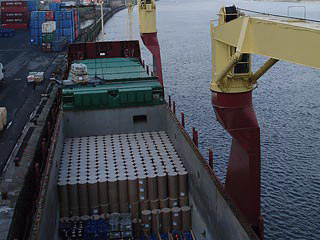
Today the stowing plans are still worked out on board by
the crew under the supervision of the chief officer, however assistance is
rendered by the shore staff of the shipping company.
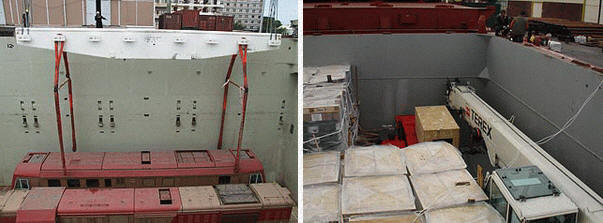
The vessels of Enzian, sailing in the Africa service are
employed by Safmarine Antwerp, which is operating many liner services around
the world and has the necessary infrastructure and expert personnel in the
ports.

HPS; Enzian; SwissShips, July 2011



|